Behind the science: ‘Smart machines’ for Mexico’s smallholder farmers
By Brenna Goth/CIMMYT
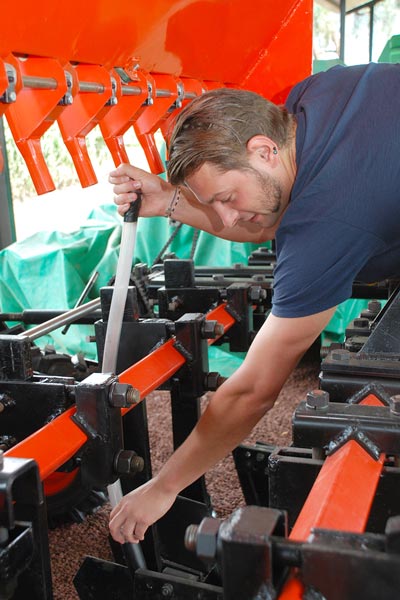
team is working to develop less expensive and more precise options. Photo: Xochiquetzal Fonseca/CIMMYT
Jelle Van Loon’s workshop in the fields at El Batán is all about experimentation. The CIMMYT engineer from Belgium is making affordable and efficient tools for smallholder farmers in Mexico by innovating technology and adapting what is already available. Van Loon, leader of smart mechanization for the conservation agriculture program in Mexico, works within the Take it to the Farmer component of MasAgro, or the Sustainable Modernization of Traditional Agriculture. MasAgro focuses on sustainable farming practices and new technology to help farmers increase their maize and wheat yields.
Van Loon and his team design and produce machinery specifically suited for conditions in Mexico. That might mean adding fertilizer and seed bins to a 2-wheel tractor, modifying hand planters from China and Brazil or adapting a machine to be able to plant seeds for large or small grains. “This is going to be awesome,” Van Loon said while looking at a prototype of a shovel with seed and fertilizer boxes attached. One of the other tools his team is working with – a hand planter that deposits fertilizer and seed – was featured, along with Van Loon, in a Voice of America news article last month.
Van Loon, who came to CIMMYT in October 2012, has a background in agriculture and engineering and has worked throughout Latin America. Development is “in his blood,” he said, because his grandfather was a farmer and his parents worked in the Congo. He first came to Latin America as a teenager when he studied in Honduras as part of an exchange program. “I stayed a lot longer than I was supposed to,” said Van Loon, who also researched in Peru while working on his master’s degree. The chance to return to his “Latin roots” motivated Van Loon to apply for the smart mechanization position at CIMMYT. He said he has driven tractors since he was 10 years old and fixed motorcycles since he was 16, which helped him learn quickly on the job.
Many of the machines Van Loon and his team adapt are already used elsewhere in the world, but small changes or additions can make them more effective in Mexico or useful for multiple crops. By adding a water pump to a tractor, for example, or offering a variety of discs for a plow, machines can be more efficient. New tools are first designed using SolidWorks, a 3D modeling computer program. Implements are then stress-tested in the field to see how useful they are in local conditions. The team works with local blacksmiths so machines can be made and repaired in the area.
Throughout the process, Van Loon is in touch with the farmers who could benefit from his team’s work. “We see what they want to achieve and make it align with conservation agriculture principles,” he said. His team produces information sheets on the tools as well as plans that anyone can download and print, with the goal of making the innovations readily available. Van Loon said he spends about half of his time in the office and the other half in the field. MasAgro has hubs throughout Mexico, sometimes allowing him to ride his motorcycle nearly 1,700 kilometers to Ciudad Obregón, Sonora. He also explains his work to visitors, who can see the improved machines on display at a hangar at El Batán.
It takes collaboration to help farmers improve their maize and wheat yields, Van Loon said. His team is focused on the latter two-thirds of the “good seeds, good tools and good practices” equation farmers need to succeed. “We want to create a smart smallholder farmer,” Van Loon said.
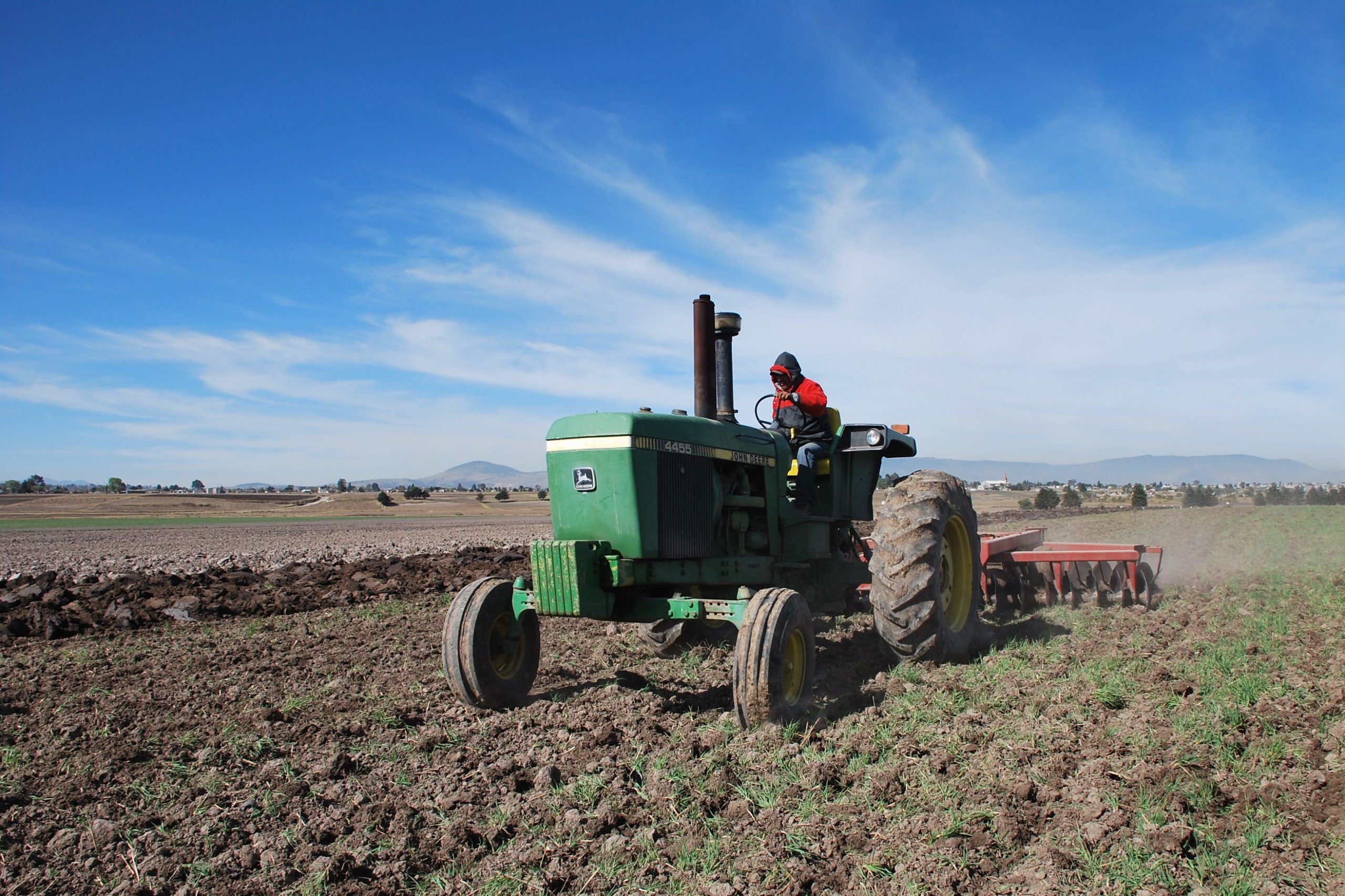
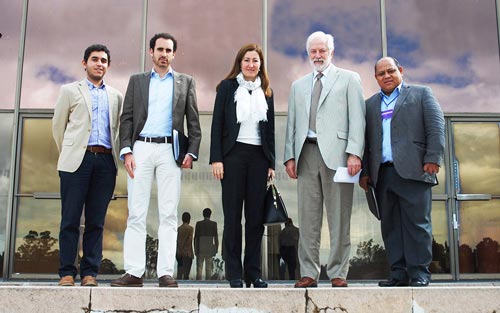
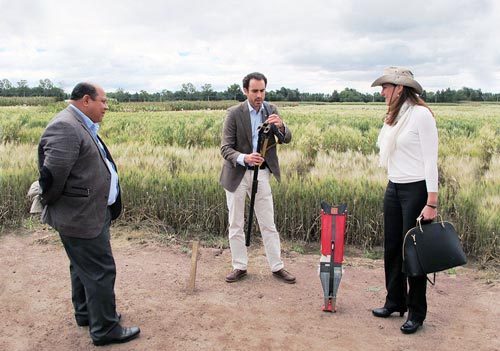
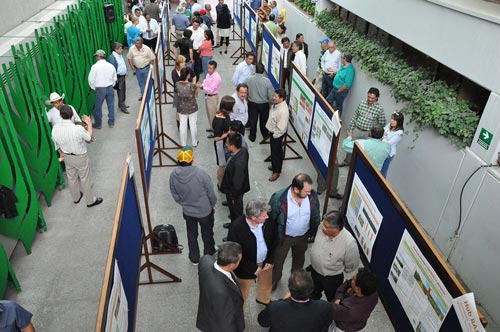 Husband-and-wife duo Oscar Hernández Mendoza and Rosa Elena Montiel Díaz said their work with MasAgro helps them improve the lives of farmers in their town. The two made a presentation about their efforts in Úrsulo Galván, Veracruz, on 29 August during CIMMYT’s first symposium for MasAgro experimental platforms. MasAgro, or the Sustainable Modernization of Traditional Agriculture, is a CIMMYT program coordinated with Mexico’s Ministry of Agriculture, Livestock, Rural Development, Fisheries, and Food (SAGARPA).
Husband-and-wife duo Oscar Hernández Mendoza and Rosa Elena Montiel Díaz said their work with MasAgro helps them improve the lives of farmers in their town. The two made a presentation about their efforts in Úrsulo Galván, Veracruz, on 29 August during CIMMYT’s first symposium for MasAgro experimental platforms. MasAgro, or the Sustainable Modernization of Traditional Agriculture, is a CIMMYT program coordinated with Mexico’s Ministry of Agriculture, Livestock, Rural Development, Fisheries, and Food (SAGARPA).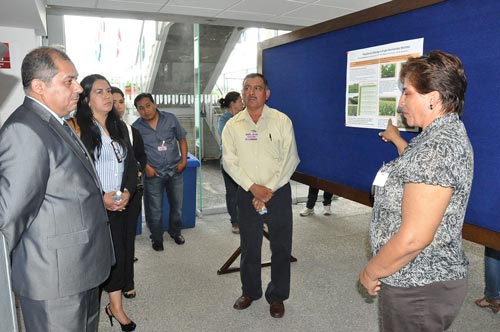 Jesús Rafael Valenzuela Borbón came to the symposium from Navojoa, in southern Sonora. He is trying to bring conservation agriculture practices to farmers in an area where the main problem is a lack of water. Valenzuela is in charge of an experimental site where he is growing maize and wheat using crop rotation. Use of such practices in the area is minimal, though Valenzuela is looking for support to implement them more widely, he explained. “All of the results are very favorable,” he said.
Jesús Rafael Valenzuela Borbón came to the symposium from Navojoa, in southern Sonora. He is trying to bring conservation agriculture practices to farmers in an area where the main problem is a lack of water. Valenzuela is in charge of an experimental site where he is growing maize and wheat using crop rotation. Use of such practices in the area is minimal, though Valenzuela is looking for support to implement them more widely, he explained. “All of the results are very favorable,” he said.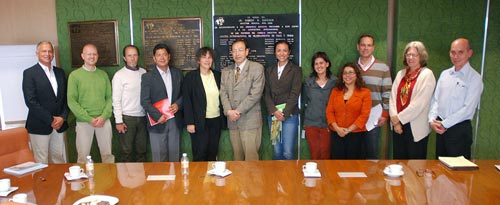
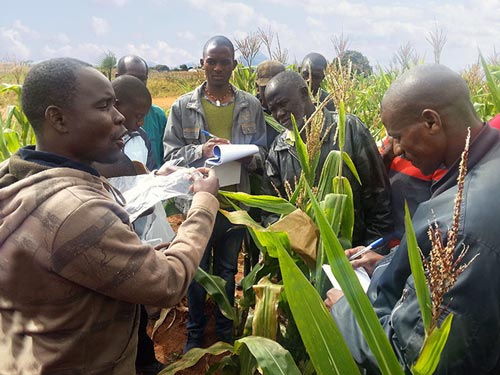
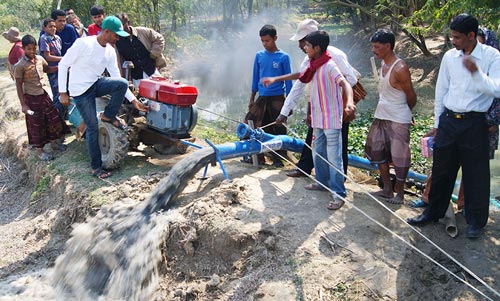
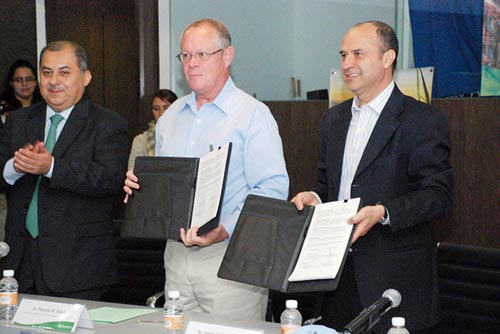
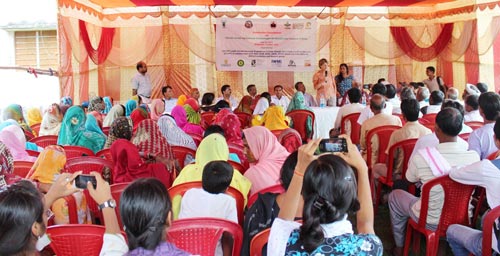 “Climatic extremes and variability are becoming more frequent and resulting in losses for farmers. This issue cannot be addressed in isolation; it needs collective participation of all stakeholders, at all levels,” stated Clare Stirling, leader of the CIMMYT component of the Climate Change, Agriculture and Food Security (CCAFS) CRP, at a stakeholder consultation on ‘Climate Smart Agricultural Technologies for Smallholder Farmers of Bihar’ held on 22 July 2013.
“Climatic extremes and variability are becoming more frequent and resulting in losses for farmers. This issue cannot be addressed in isolation; it needs collective participation of all stakeholders, at all levels,” stated Clare Stirling, leader of the CIMMYT component of the Climate Change, Agriculture and Food Security (CCAFS) CRP, at a stakeholder consultation on ‘Climate Smart Agricultural Technologies for Smallholder Farmers of Bihar’ held on 22 July 2013.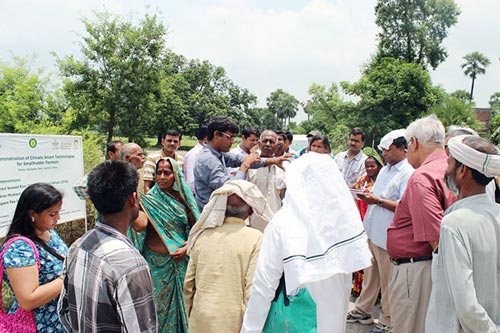 The lively discussions included almost 200 participants, including innovative CSV farmers from Bhatthadasi, Rajapakar, and Mukundpur (Vaishali district); agriculture advisors from various Village Panchayats; climate smart farmer groups, research students, and local service providers. M.L. Jat, CIMMYT-CCAFS South Asia Leader, explained the concept of CCAFS CSVs in South Asia, and the key climate smart activities they are implementing for the benefit of smallholder farmers in Bihar’s Vaishali district. Participants visited demonstration plots where R.K. Jat, CIMMYT-BISA Cropping Systems Agronomist, showed how mechanization and conservation agriculture-based management practices are being implemented even on small, fragmented land holdings. By effectively ‘pooling’ their land for operational purposes, farmers have improved efficiency, reduced costs, and established timely crop management even with uncertain rainfall. R.K. Jat also explained the main advantages of the key climate smart interventions such as zero tillage, Direct Seeded Rice (DSR), raised bed planting, residue management, crop diversification, and nutrient management in managing climate risks and optimizing resources for higher profitability for the smallholders.
The lively discussions included almost 200 participants, including innovative CSV farmers from Bhatthadasi, Rajapakar, and Mukundpur (Vaishali district); agriculture advisors from various Village Panchayats; climate smart farmer groups, research students, and local service providers. M.L. Jat, CIMMYT-CCAFS South Asia Leader, explained the concept of CCAFS CSVs in South Asia, and the key climate smart activities they are implementing for the benefit of smallholder farmers in Bihar’s Vaishali district. Participants visited demonstration plots where R.K. Jat, CIMMYT-BISA Cropping Systems Agronomist, showed how mechanization and conservation agriculture-based management practices are being implemented even on small, fragmented land holdings. By effectively ‘pooling’ their land for operational purposes, farmers have improved efficiency, reduced costs, and established timely crop management even with uncertain rainfall. R.K. Jat also explained the main advantages of the key climate smart interventions such as zero tillage, Direct Seeded Rice (DSR), raised bed planting, residue management, crop diversification, and nutrient management in managing climate risks and optimizing resources for higher profitability for the smallholders.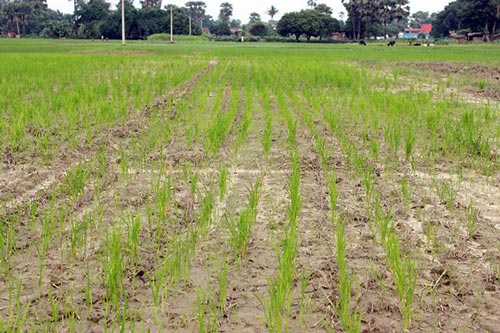 The active participation of about 80 female farmers allowed for a balanced and varied consultation. All the farmers expressed their concerns regarding climate variability and how it is affecting their livelihoods. They shared their experiences of turning their villages into CSVs, and how the new practices have benefitted them; after planting their wheat under zero till in the winter of 2012-13, farmers were initially skeptical of these changes to age-old practices, but having now reaped higher yields with less input costs, all the farmers have committed to planting under zero tillage next season. DSR has also been recently introduced, and the farmers thought the technology seemed promising in that it would reduce cultivation costs and provide some security under the increasing uncertainties of rainfall and labor shortages. The women farmers praised the intoduction of the ZT machine by CIMMYT under CCAFS. With many men migrating to cities, the women highlighted the reduced labor load with the increased availability of machinery and bed planting of maize and legumes.
The active participation of about 80 female farmers allowed for a balanced and varied consultation. All the farmers expressed their concerns regarding climate variability and how it is affecting their livelihoods. They shared their experiences of turning their villages into CSVs, and how the new practices have benefitted them; after planting their wheat under zero till in the winter of 2012-13, farmers were initially skeptical of these changes to age-old practices, but having now reaped higher yields with less input costs, all the farmers have committed to planting under zero tillage next season. DSR has also been recently introduced, and the farmers thought the technology seemed promising in that it would reduce cultivation costs and provide some security under the increasing uncertainties of rainfall and labor shortages. The women farmers praised the intoduction of the ZT machine by CIMMYT under CCAFS. With many men migrating to cities, the women highlighted the reduced labor load with the increased availability of machinery and bed planting of maize and legumes.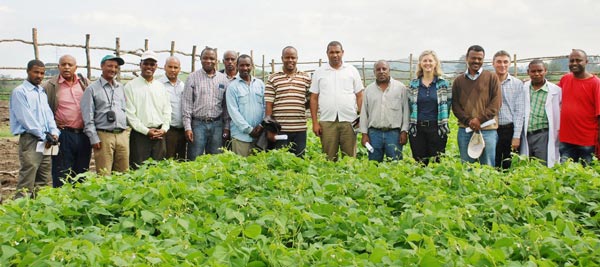 Myths and cultural practices can block farmers’ acceptance of a new technology, particularly the principles of reduced tillage, residue retention, and cropping rotations that underlie conservation agriculture. This was one observation in a recent visit to farmers in four districts in Ethiopia by Australian International Food Security Centre (
Myths and cultural practices can block farmers’ acceptance of a new technology, particularly the principles of reduced tillage, residue retention, and cropping rotations that underlie conservation agriculture. This was one observation in a recent visit to farmers in four districts in Ethiopia by Australian International Food Security Centre (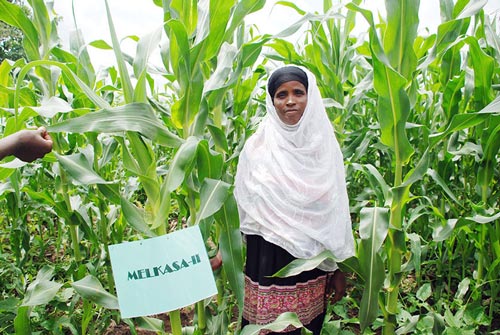
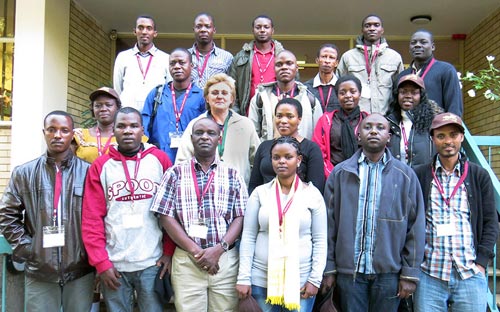 Fifteen young scientists from
Fifteen young scientists from 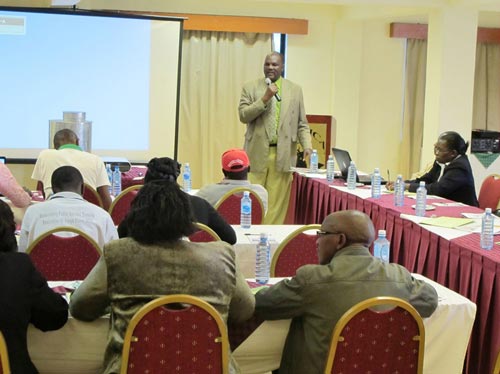 Kenya has experienced tremendous improvements in maize productivity, rising from 1,530,000 metric tons in 2002 to 3,420,000 in 2011. However, postharvest losses of up to 40% of the harvested grain pose great challenges to attaining food security, as about 80% of Kenyans live in rural areas and derive their livelihoods mostly from agricultural activities. With maize being the main staple crop and agriculture the cornerstone of Kenya’s economy accounting for 27% of GDP and producing over 75% of industrial raw materials, postharvest losses also pose a challenge to the economic development of the country. To address these issues, CIMMYT and the Kenya Agricultural Research Institute (
Kenya has experienced tremendous improvements in maize productivity, rising from 1,530,000 metric tons in 2002 to 3,420,000 in 2011. However, postharvest losses of up to 40% of the harvested grain pose great challenges to attaining food security, as about 80% of Kenyans live in rural areas and derive their livelihoods mostly from agricultural activities. With maize being the main staple crop and agriculture the cornerstone of Kenya’s economy accounting for 27% of GDP and producing over 75% of industrial raw materials, postharvest losses also pose a challenge to the economic development of the country. To address these issues, CIMMYT and the Kenya Agricultural Research Institute (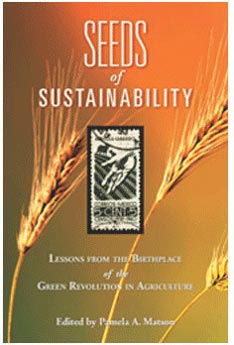 The Ecological Society of America (
The Ecological Society of America (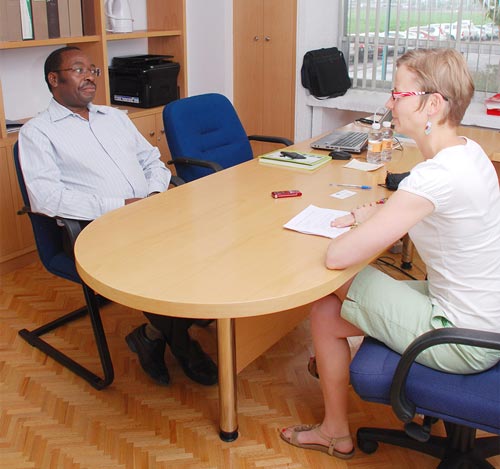 The Global Conservation Agriculture Program (GCAP) works closely with partners all over the world toward an ultimate vision of widespread use of sustainable systems by smallholder farmers, based on the principles of conservation agriculture (CA). Our key partner in Africa is the African Conservation Tillage Network (
The Global Conservation Agriculture Program (GCAP) works closely with partners all over the world toward an ultimate vision of widespread use of sustainable systems by smallholder farmers, based on the principles of conservation agriculture (CA). Our key partner in Africa is the African Conservation Tillage Network (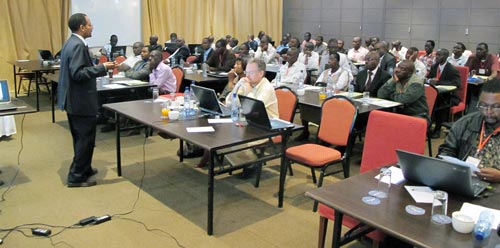 “Reducing post-harvest losses is key to increasing availability of food as it is not only important to increase domestic food production but also to protect what is produced by minimizing losses,” stated Zechariah Luhanga, Permanent Secretary, Provincial Administration at the Office of the President, Eastern Province, at the Provincial Stakeholders Workshop on Effective Grain Storage for Sustainable Livelihoods of African Farmers Project (EGSP-II) held in Chipata, Zambia, on 29 May 2013. “We as the key stakeholders and participants in the agricultural sector can enhance food security and improve incomes of resource poor farmers and artisans by promoting improved storage technologies such as metal silos and hermetic bags in Zambia.”
“Reducing post-harvest losses is key to increasing availability of food as it is not only important to increase domestic food production but also to protect what is produced by minimizing losses,” stated Zechariah Luhanga, Permanent Secretary, Provincial Administration at the Office of the President, Eastern Province, at the Provincial Stakeholders Workshop on Effective Grain Storage for Sustainable Livelihoods of African Farmers Project (EGSP-II) held in Chipata, Zambia, on 29 May 2013. “We as the key stakeholders and participants in the agricultural sector can enhance food security and improve incomes of resource poor farmers and artisans by promoting improved storage technologies such as metal silos and hermetic bags in Zambia.”